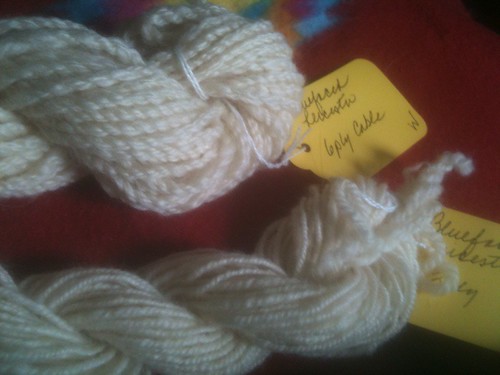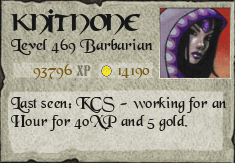My sample is a commercial top preparation, and has a staple length of about four inches (maybe a little more) - shorter than the breed standard.
I spun my sample long draw from the fold for a 3ply yarn. I enjoyed spinning this, but I think that if the staple length had been truer to the breed standard, I might not have liked it. I've found spinning staples of more than five inches (six max) is a struggle and takes me out of my comfort zone (not always a bad thing).

Blue-faced Leicester is also a Longwool breed. It originated in Hexam, Northumberland County, England and is a decendant of the Leicester Longwool. It is sometimes called a Hexam Leicester. Under certain lighting conditions, the short white hairs covering the black skin on their heads makes their faces/heads look blue, hence the name. Blue-faced Leicester, or BFL, should have a micron count of twenty-four to twenty-eight and an average staple length of three to six inches.
My sample is commercially prepared top with a staple length of five plus inches. I've spun very small amounts of BFL before, but as I have two pounds of BFL top that I'm planning on spinning for a sweater project, I thought I'd use this sample as a test on how I'd like to ply for the sweater.
I spun the top from the fold worsted (well, I guess technically that's semi-worsted) for a 3ply yarn. It spun easily. BFL is soft with a bit of shine. Like spinning Merino, I find spinning BFL kinda boring, but I did like the feel of the wool better than a Border Leicester or Lincoln. Anything feels better than Lincoln.
I left a third of my total 3ply yardage as 3ply sample. The remaining two thirds I used to make a 6ply cable yarn which I liked much better than the 3ply. When I get around to testing the actual project BFL, I will try a 4ply cable to see if I like it as much as the six.

Breed information provided by "The Knitter's Book of Wool" by Clara Parkes and "In Sheep's Clothing" by Nola & Jane Fournier.




No comments:
Post a Comment